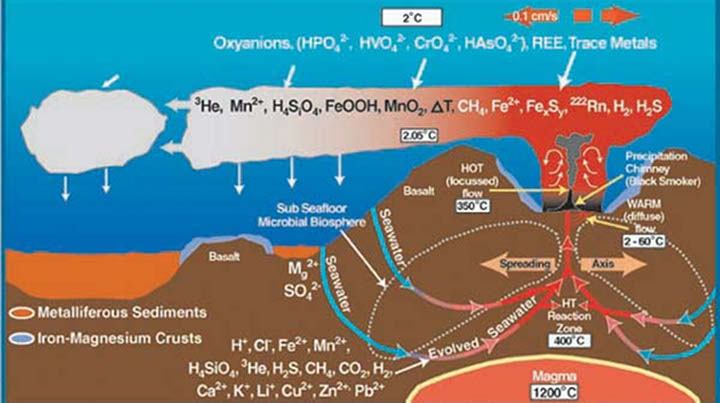

Volcanic heat at the mid-ocean ridge axis drives hydrothermal circulation and chemical exchange between the ocean crust and seawater. Microbes are known to harness chemical energy from this volcanic system at temperatures as high as 121°C. A mid-ocean ridge hydrothermal system, plume, and resulting deposits and precipitates are featured. Some metals represented: Mn = Manganese, Mg = Magnesium, Cu = Copper, Zn = Zinc, Fe = Iron. Some gases represented: 3He = Helium from the Earth's mantle, H2 = Hydrogen, CH4 = Methane, H2S = Hydrogen Sulfide, CO2 = Carbon Dioxide. The boiling point of water at sea level is 100° C (Celsius) or 212° F (Fahrenheit). 350° C = 660° F. (Modified from Massoth et al., 1988.)